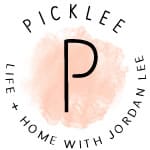Wire is a great material to use for jewelry. It’s extremely versatile (comes in endless colors and sizes), and it can look surprisingly chic! You might remember some fun wrapped wire pieces I’ve created in the past, like the Birds Nest Necklace and the Beach Bubble Ring, those wire made using a super simple wrapped wire technique. Today’s jewelry project follows a similar concept, except it uses a smaller gauge wire (26 gauge) and I’m going to refer to the method as “spinning” wire, rather than “wrapping” wire. Creating this “hand spun” wire look could not be more simple, because there’s no exact science to it, so feel free to get as creative as you want with this one! Introducing, the Hand Spun Wire Earrings…
Hand Spun Wire Earrings {diy}
Start wire a roll of 26 gauge wire (I used silver and copper, you could use only one color if you prefer). You will also need two fish hook earring findings to attach your spun wire circles to
Cut a piece of wire approx. 12″ long. Begin by twisting the wire into a small circle (the size that you would like for your earrings.
Continue twisting and spinning the wire in and around the circle. There is no real “method” to this, as the look is meant to be random and un-contrived.
Keep wrapping and twisting the wire until you end up with something like this…
I chose to make a second spun wire circle out of copper for two toned earrings. If you choose to do this, repeat steps one and two. Cut a 12″ piece of copper wire, this time link it to the first circle, then start twisting your second circle. Remember, do this while both circles are linked together (connecting them after the fact can be difficult)!
Using jewelry pliers, attach a small jump ring to one of the spun wire circles, then secure your fish hook finding.
One earring is done! Now repeat this process for the other earring and you’ll end up with a super unique, gorgeous pair of hand spun wire earrings!






Hi, I just made a pair – only with one silver ball each. Mine don’t seem as full as yours. Have you ever used more than 12″ or should I stick with that? Thank you SO much. Pam
hi thanks, it’s interesting, nice tutorial